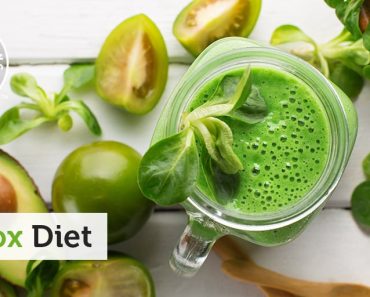In recent years, the Whole30 diet has gained significant popularity as a way to reset eating habits and improve overall health. Developed by Melissa Hartwig Urban and Dallas Hartwig in 2009, the Whole30 program is a 30-day dietary challenge designed to eliminate certain food groups that may negatively impact health. By focusing on whole, unprocessed foods, the Whole30 aims to help individuals identify food sensitivities, reduce inflammation, and develop a healthier relationship with food. This article will explore the basics of the Whole30 diet, its benefits, and tips for successfully completing the program.
What is the Whole30 Diet?
The Whole30 diet is a short-term nutritional reset that emphasizes whole foods while eliminating sugar, alcohol, grains, legumes, dairy, and processed foods for 30 days. The program’s creators claim that these food groups can contribute to a range of health issues, including inflammation, digestive problems, and cravings. By removing these foods from the diet, individuals can better understand how different foods affect their bodies and make more informed dietary choices.

Allowed Foods on Whole30
During the Whole30 program, participants are encouraged to consume:
Meat, Seafood, and Eggs: All types of meat, seafood, and eggs are allowed, as long as they are minimally processed and do not contain added sugars or preservatives.
Vegetables: A wide variety of vegetables, including leafy greens, root vegetables, and cruciferous vegetables, are encouraged.
Fruits: Fresh fruits are allowed in moderation. They can be a good source of natural sweetness and essential vitamins.
Healthy Fats: Healthy fat sources such as avocados, nuts (except peanuts), seeds, and oils (olive, coconut, and avocado) are encouraged.
Herbs and Spices: Fresh and dried herbs and spices are allowed to add flavor to dishes without the need for processed condiments.
Foods to Avoid on Whole30
Participants must eliminate the following foods during the 30-day program:
Added Sugar: All forms of added sugar, including honey, maple syrup, and artificial sweeteners.
Alcohol: All forms of alcohol and products containing alcohol.
Grains: All grains, including wheat, rice, oats, corn, and quinoa.
Legumes: Beans, lentils, chickpeas, peanuts, and soy products.
Dairy: Milk, cheese, yogurt, and other dairy products.
Processed Foods: Foods with added preservatives, artificial flavors, and other additives.
Benefits of the Whole30 Diet
The Whole30 program offers several potential benefits:
Improved Digestion: By eliminating common allergens and inflammatory foods, many participants experience improved digestion and reduced gastrointestinal discomfort.
Increased Energy: Many people report increased energy levels and better focus as a result of eating whole, nutrient-dense foods.
Weight Loss: Although weight loss is not the primary goal of the Whole30, many individuals experience weight loss due to the elimination of processed foods and added sugars.
Reduced Cravings: The program helps break the cycle of sugar and junk food cravings, leading to healthier eating habits.
Better Sleep: Improved diet and reduced inflammation can contribute to better sleep quality and duration.
Food Sensitivity Identification: After the 30-day period, participants gradually reintroduce eliminated foods to identify any adverse reactions or sensitivities.
Challenges of the Whole30 Diet
While the Whole30 diet offers numerous benefits, it also presents several challenges:
Restrictive Nature: The program’s strict rules can be challenging to follow, especially for those accustomed to a diet that includes grains, dairy, and legumes.
Social Situations: Eating out or attending social gatherings can be difficult, as many common foods and beverages are off-limits.
Meal Planning and Preparation: The need to prepare whole, unprocessed foods requires significant time and effort, which can be daunting for individuals with busy schedules.
Initial Adjustment Period: Some participants experience withdrawal symptoms such as headaches, fatigue, and irritability during the first few days as their bodies adjust to the new diet.
Tips for Success on the Whole30 Diet
To successfully complete the Whole30 program, consider the following tips:
Plan Ahead: Prepare meals and snacks in advance to avoid the temptation of convenient, processed foods.
Read Labels Carefully: Many packaged foods contain hidden sugars and additives, so it’s essential to read labels and choose Whole30-compliant options.
Stay Hydrated: Drinking plenty of water can help reduce cravings and support overall health during the program.
Find Support: Joining a Whole30 support group or enlisting a friend to do the program with you can provide motivation and accountability.
Focus on Variety: Eating a wide range of fruits, vegetables, proteins, and healthy fats can prevent boredom and ensure you get a variety of nutrients.
Be Patient: Remember that the initial adjustment period can be challenging, but many participants report feeling significantly better after the first week.
The Whole30 diet offers a structured approach to eliminating potentially problematic foods and focusing on whole, nutrient-dense options. While the program can be challenging, many participants find it a valuable tool for resetting their eating habits, identifying food sensitivities, and improving overall health. By planning ahead, staying committed, and seeking support, individuals can successfully navigate the Whole30 journey and reap its numerous benefits. Whether you’re looking to improve digestion, increase energy, or simply develop healthier eating habits, the Whole30 diet may be a worthwhile endeavor.






